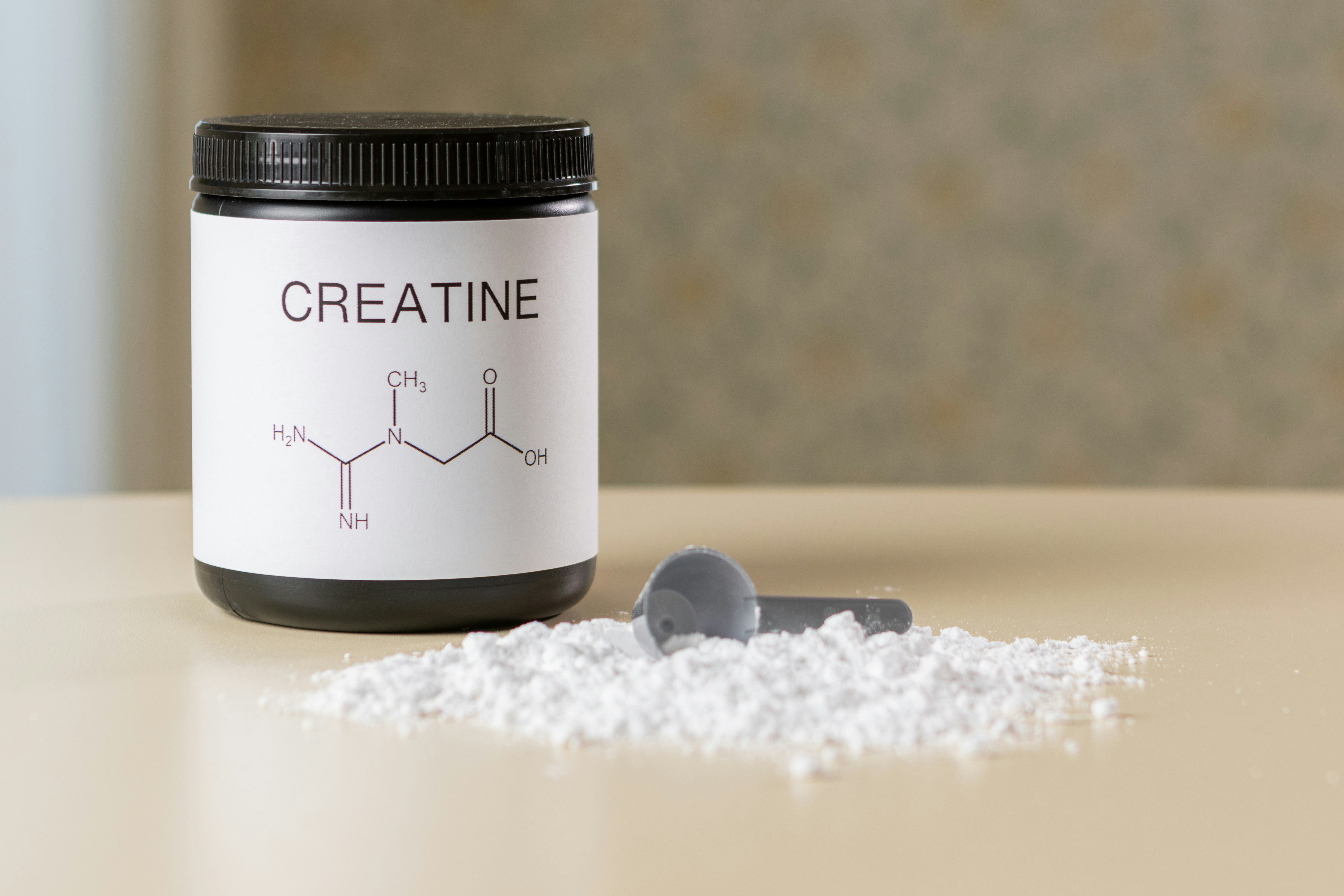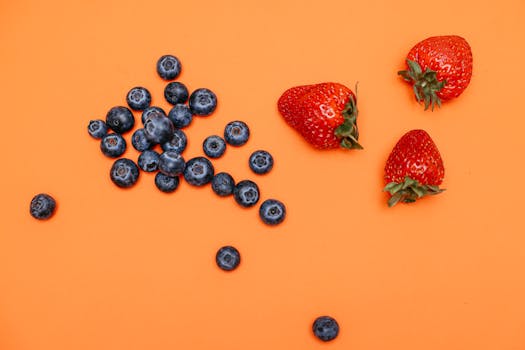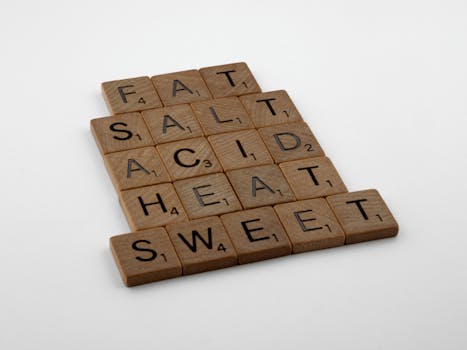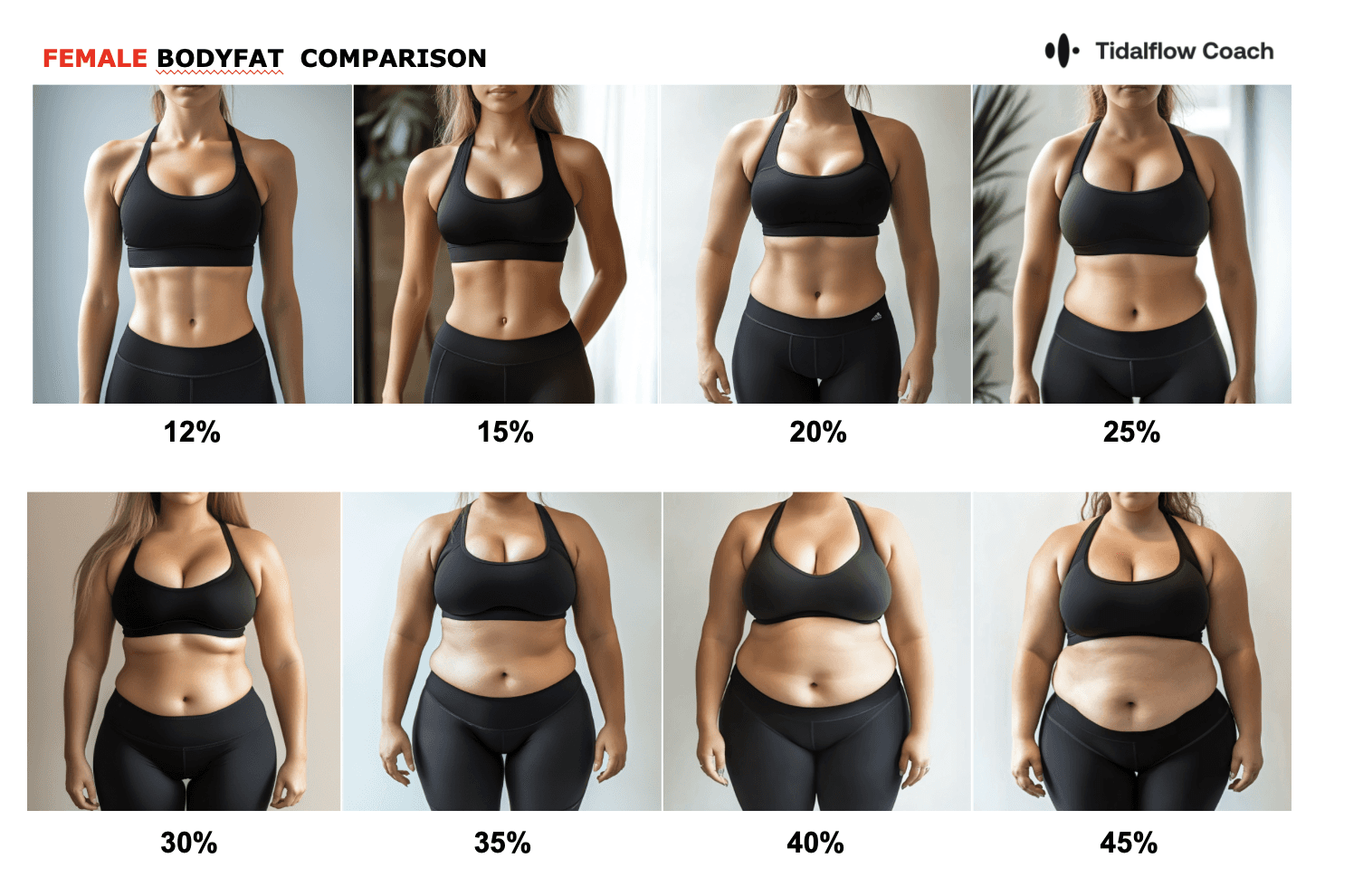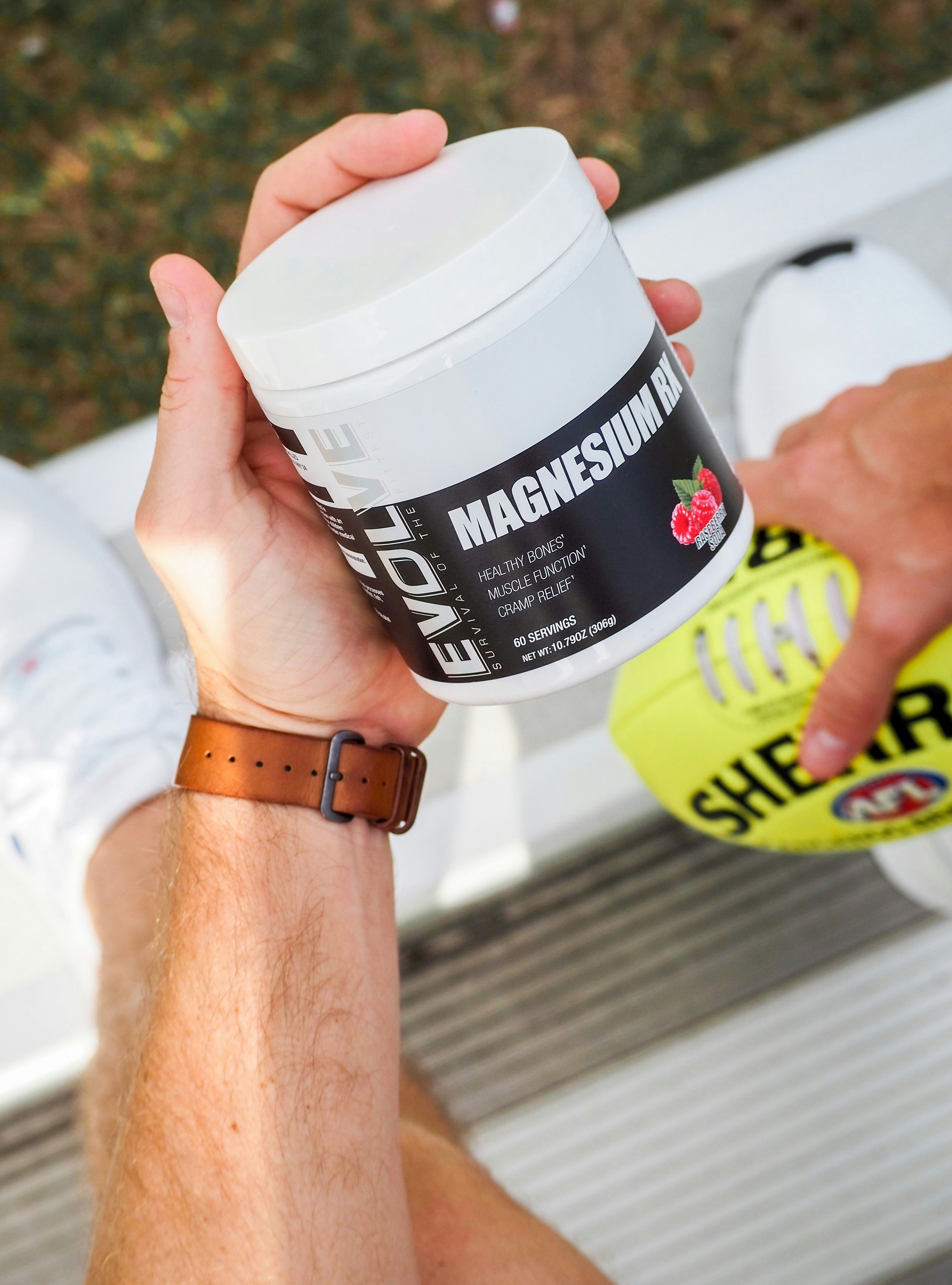The Creatine Loading Phase: Maximizing Your Muscle Stores
Oct 3, 24
Creatine has long been a popular supplement among athletes, bodybuilders, and fitness enthusiasts. Its ability to enhance performance, increase muscle mass, and improve strength has made it a staple in many supplement regimens. One strategy that's often discussed when starting creatine supplementation is the "loading phase." But what exactly is the creatine loading phase, and is it necessary? Let's dive deep into this topic and explore the ins and outs of creatine loading.
What is the Creatine Loading Phase?
The creatine loading phase is a strategy used to rapidly increase the creatine stores in your muscles. During this phase, you consume a higher dose of creatine for a short period, typically 5-7 days, before dropping down to a lower maintenance dose.
The theory behind the loading phase is that by saturating your muscles with creatine quickly, you'll be able to experience the benefits of creatine supplementation sooner than if you were to start with a lower dose.
What is a Good Loading Phase for Creatine?
A typical creatine loading phase involves taking 20-25 grams of creatine per day, split into 4-5 doses, for 5-7 days. After this initial period, you transition to a maintenance phase of 3-5 grams per day.
Here's an example of what a creatine loading phase might look like:
Days 1-5: 20 grams per day, split into 4 doses of 5 grams each
Day 6 onwards: 3-5 grams per day as a single dose
It's important to note that while this is a common protocol, individual needs may vary based on factors such as body weight, muscle mass, and activity level.
Can I Take 20g of Creatine at Once?
While it's technically possible to take 20g of creatine at once, it's generally not recommended. Taking such a large dose all at once may lead to gastrointestinal discomfort in some individuals. Additionally, your body may not be able to effectively absorb such a large amount of creatine at once, potentially leading to waste.
Instead, it's better to spread out your creatine intake throughout the day during the loading phase. This approach can help minimize potential side effects and ensure better absorption.
Is the Creatine Loading Phase 10g or 20g?
The most commonly recommended creatine loading phase involves 20-25 grams per day. However, some protocols suggest a lower dose of 10 grams per day. The choice between these two approaches often depends on individual factors and goals.
A 20-gram loading phase may saturate muscle creatine stores more quickly, potentially leading to faster results. However, a 10-gram loading phase may be more suitable for those who experience digestive discomfort with higher doses.
Ultimately, both approaches can be effective, and the choice often comes down to personal preference and tolerance.
Is 10 Grams of Creatine a Day Too Much?
For most people, 10 grams of creatine per day is not too much, especially during a loading phase. In fact, many studies have used doses of 20 grams or more per day without reporting significant adverse effects.
However, it's important to remember that everyone's body responds differently to supplements. While 10 grams per day is generally considered safe for most healthy individuals, it's always a good idea to start with a lower dose and gradually increase it to assess your tolerance.
Is it Okay to Take 2 Scoops of Creatine a Day?
The appropriateness of taking two scoops of creatine per day depends on the serving size of your particular creatine product and your supplementation goals.
If you're in the loading phase and each scoop contains 5 grams of creatine, then two scoops (10 grams) would be within the typical loading phase recommendations. However, if you're in the maintenance phase, two 5-gram scoops (10 grams total) would be more than the typically recommended 3-5 grams per day.
Always refer to the specific instructions on your creatine product and consult with a healthcare professional if you're unsure about the appropriate dosage for your needs.
Is 5g or 10g of Creatine Better?
The choice between 5g and 10g of creatine largely depends on your supplementation phase and individual needs.
During the maintenance phase, 5g of creatine per day is generally sufficient to maintain elevated muscle creatine stores. This dose has been widely studied and shown to be effective for most individuals.
However, during the loading phase, or for larger individuals with more muscle mass, 10g per day might be more appropriate. Some research suggests that individuals weighing over 200 pounds may benefit from slightly higher maintenance doses of 5-10g per day.
Remember, more is not always better. Once your muscle creatine stores are saturated, additional creatine intake won't provide further benefits and will simply be excreted from your body.
Is 5g of Creatine Enough to Build Muscle?
Yes, 5g of creatine per day can be effective for building muscle, especially when combined with proper strength training and nutrition. This dose has been widely studied and shown to increase muscle creatine stores, enhance performance, and promote muscle growth.
However, it's important to note that creatine is not a magic bullet for muscle growth. It works best when used in conjunction with a well-designed resistance training program and a balanced diet that provides adequate protein and calories.
How Much Creatine is Safe for the Kidneys?
Creatine is generally considered safe for healthy individuals, even at higher doses. Numerous studies have shown that creatine supplementation does not negatively impact kidney function in people with healthy kidneys.
However, if you have pre-existing kidney issues or are at risk for kidney disease, it's crucial to consult with a healthcare professional before starting creatine supplementation. They can provide personalized advice based on your individual health status.
For healthy individuals, staying within the recommended dosage ranges (20-25g/day during loading, 3-5g/day for maintenance) and ensuring adequate hydration can help minimize any potential risks.
The Benefits of the Creatine Loading Phase
The primary benefit of the creatine loading phase is the rapid increase in muscle creatine stores. This can lead to quicker onset of creatine's performance-enhancing effects, which may include:
Increased Muscle Strength: Creatine can help you lift heavier weights and perform more repetitions.
Enhanced Power Output: Creatine can improve performance in high-intensity, short-duration activities like sprinting or jumping.
Accelerated Muscle Growth: By allowing you to train harder, creatine can indirectly promote muscle growth.
Improved Recovery: Creatine may help reduce muscle damage and inflammation after intense exercise.
Increased Exercise Capacity: With more available energy in your muscles, you may be able to train longer and harder.
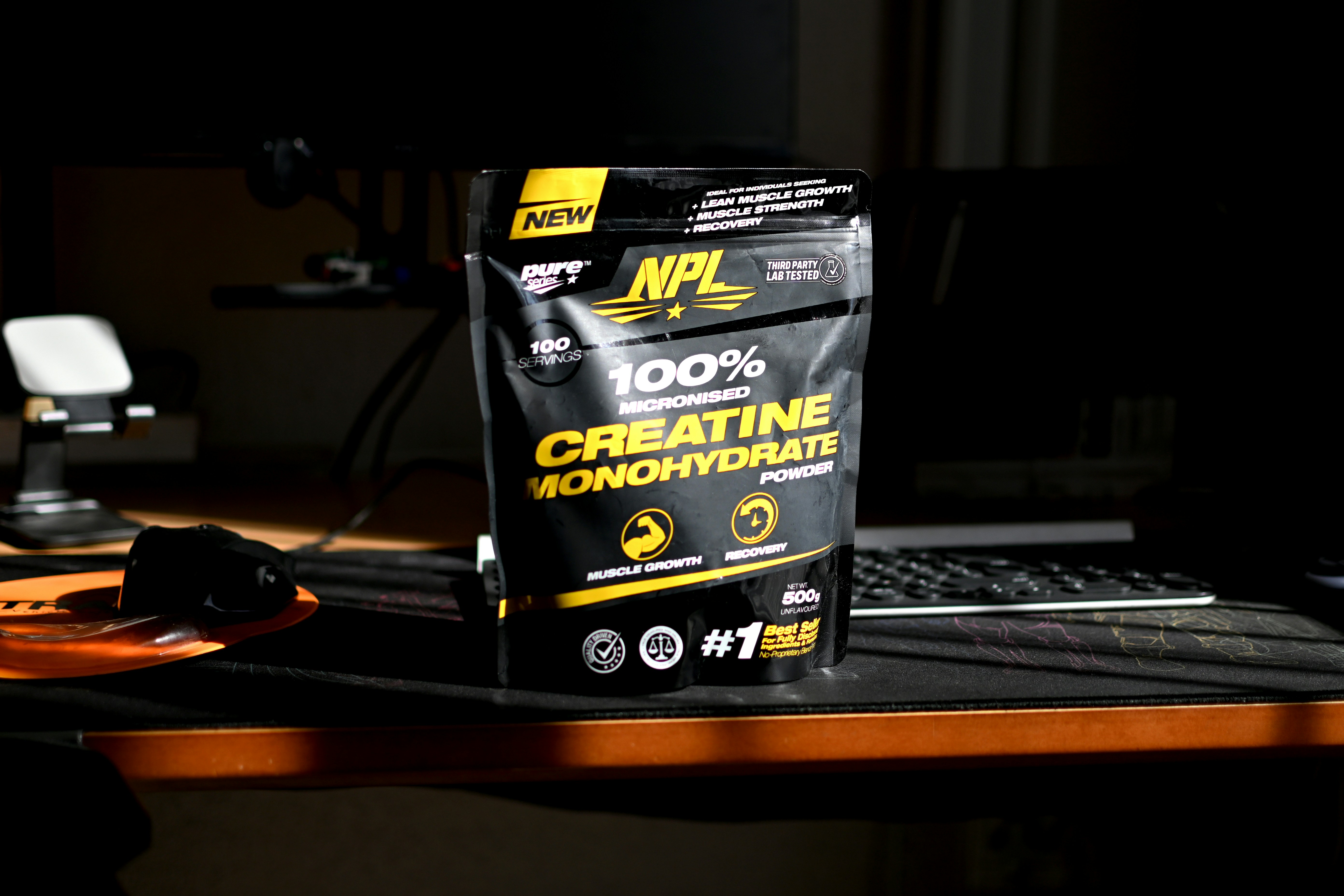
Potential Drawbacks of the Creatine Loading Phase
While the creatine loading phase can be beneficial, it's not without potential drawbacks:
Gastrointestinal Discomfort: Some people may experience bloating, cramping, or diarrhea when consuming large amounts of creatine.
Water Retention: Creatine causes your muscles to hold more water, which can lead to temporary weight gain.
Cost: Using higher doses during the loading phase means you'll go through your creatine supply faster.
Inconvenience: Taking multiple doses throughout the day can be inconvenient for some people.
Alternatives to the Loading Phase
If you're concerned about the potential drawbacks of the loading phase, there are alternatives:
Gradual Loading: Instead of 20-25g per day, you could start with 5g per day. This approach takes longer to fully saturate your muscles (about 3-4 weeks), but it may cause fewer side effects.
Cycling: Some people choose to cycle their creatine intake, using it for a few months, then taking a break before starting again.
Food Sources: While it's difficult to get the same amount of creatine from food as you would from supplements, increasing your intake of creatine-rich foods like red meat and fish can help boost your creatine stores over time.
How to Implement the Creatine Loading Phase
If you decide to go ahead with a creatine loading phase, here are some tips for implementation:
Choose the Right Type: Creatine monohydrate is the most studied and typically the most cost-effective form of creatine.
Spread Out Your Doses: During the loading phase, try to spread your creatine intake throughout the day. For example, you could take 5g with breakfast, lunch, dinner, and before bed.
Stay Hydrated: Creatine causes your muscles to retain more water, so it's important to increase your fluid intake.
Take with Carbs: Some research suggests that taking creatine with carbohydrates or a carb-protein mixture may improve absorption.
Be Consistent: For best results, take your creatine every day, not just on workout days.
Monitor Your Response: Pay attention to how your body responds. If you experience negative side effects, consider reducing your dose or stopping supplementation.
Creatine Loading and Exercise
During the creatine loading phase, you can continue your regular exercise routine. In fact, exercising during this time may help with creatine uptake into your muscles.
You might notice some performance improvements towards the end of your loading phase or in the early days of your maintenance phase. This could manifest as being able to lift slightly heavier weights or perform an extra rep or two in your sets.
However, it's important not to push yourself too hard too quickly. Gradual progression is key to avoiding injury and achieving sustainable results.
Nutrition and Creatine Loading
While you're going through the creatine loading phase, it's important to maintain a balanced diet. Creatine works best when combined with adequate protein intake and overall calorie sufficiency.
If you're aiming to build muscle, ensure you're eating in a slight calorie surplus and consuming enough protein (around 1.6-2.2 grams per kilogram of body weight per day). If fat loss is your goal, a moderate calorie deficit can be maintained while using creatine.
Remember, creatine is not a substitute for a good diet. It's a supplement to an already solid nutrition plan.
Conclusion: Is the Creatine Loading Phase Right for You?
The creatine loading phase can be an effective way to quickly saturate your muscle creatine stores and potentially see faster results from your supplementation. However, it's not absolutely necessary, and some people may prefer to avoid it due to potential side effects or inconvenience.
If you decide to try a loading phase, pay attention to how your body responds. If you experience negative side effects, consider switching to a more gradual approach.
Remember, while creatine is one of the most studied and generally safe supplements available, it's always a good idea to consult with a healthcare professional before starting any new supplement regimen, especially if you have pre-existing health conditions.
Whether you choose to do a loading phase or not, creatine can be a valuable addition to your fitness toolkit when combined with proper training and nutrition. As with any aspect of fitness, consistency is key. Regular use of creatine, along with a well-designed exercise program and a balanced diet, can help you reach your strength and muscle-building goals more effectively.
You should not have to do it all on your own



